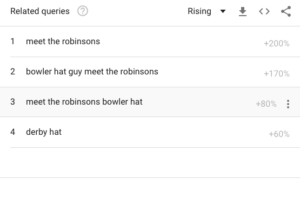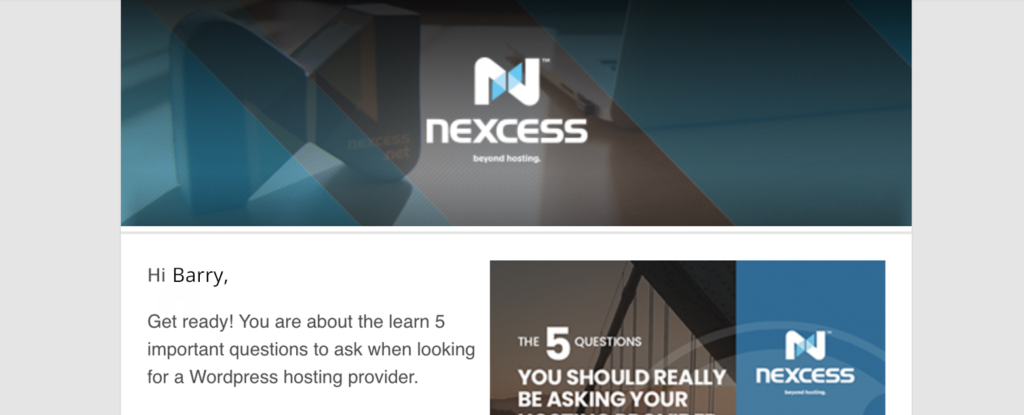Today’s buyer has access to an incredible amount of information. They are able to create a clear picture of the product they are looking to purchase by leveraging information from search engines, social media, and word of mouth.
As a merchant, this changing information landscape gives you access to multiple channels through which you can access and communicate with customers. For some, this new scope may seem scary, with a fear that merchants will now have to work harder than ever to make their products as accessible as possible.
Worried you’re not doing it right? Follow our four tips for optimizing a buyer’s journey and help guide your site visitors towards the checkout.
What is the Buyer’s Journey?
 Before delving any deeper, it’s important to define what a Buyer’s Journey actually looks like.
Before delving any deeper, it’s important to define what a Buyer’s Journey actually looks like.
A simple and commonly used representation of the buyer’s journey is the sales funnel. It’s useful as it embodies the three primary stages a buyer goes through.
- Awareness – Aware of a need for something new
- Consideration – Analyzing the different options available to them
- Decision – Final purchasing decision (a conversion)
As buyer’s progress down the funnel, they get closer to making a purchase.
Awareness of where a buyer is at, lends you the ability to target them with more relevant content. Gone are the days of blanket content marketing.
There are several ways to target those in your sales funnel effectively to help you increase eCommerce sales. We’ve collected four of the most effective.
1. Create Awesome Content
Great content does better in almost every single way. Not only will it rank better organically by being a ‘cut above the rest’, it will also attract more shares and reads. If done right, great content can also turn you into an authority or thought leader — capable of a greater degree of influence over customers’ buying decisions.
Conversely, publishing not-so-awesome content can have the opposite effect. 49% of B2B buyers said their opinion of a company decreased after reading poor quality content. Something you definitely want to avoid!
Where to Put Great Content?
Great content tends to exist on your internal blog. Blogs are a great resource for improving search visibility and providing your customers with useful information. Many eCommerce stores use their blog to post company updates, but they have much greater potential when aligned with content marketing efforts.
There are a number of ways to present your blog but, at a minimum, creating several relevant categories to aid in navigation is important. Visitors need to be able to find your awesome content.
Guest posting can also be an incredibly effective method for increasing the number of customers that visit your site. Depending on the websites you are able to guest post on, this can help you to both rank authoritatively in search engine results and expand your influence.
2. Create an Awesome Experience
There are eCommerce stores that make the buyer’s journey confusing and difficult. Either the buyer can’t find the item they are looking for, or the information they need to make an informed purchasing decision is missing.
You don’t enter a shopping mall or supermarket and find a new set of obstacles every time you turn the corner. Stores and aisles are appropriately labeled and relevant merchandise is either placed at the storefront or along the aisle. Buying online should be no different. Buyers should be able to easily find a product by following the right signs.
Creating a great user experience undoubtedly deserves an article of its own, but for the purpose for brevity, three areas you should be paying attention to at all times are:
- Navigation
- Content
- Site Speed
3. Help Buyers Find You
While creating awesome content, you should be targeting words and phrases surrounding that content. These are what are known as keywords. Keywords come in both long tail and short tail form. Short tail keywords target large, general terms. Long tail keywords target specific search phrases.
As an example, think of a buyer looking for a pair of men’s tennis shoes. A short tail keyword would be “Men’s tennis shoes”: it’s direct and to the point. A long tail keyword would be “best tennis shoes for men” or “best tennis shoes for men on astroturf”. Long tail keywords form the basis for content that draws customers towards your store while in the consideration stage of the funnel.
Finding Long Tails
So where can you find long tail keywords? Google Trends is a great resource for getting started. Simply searching for products you are selling can reveal a list of terms buyers are searching for.
Once you’ve discovered trends, you can also try using SEO tools like MOZ or SEMRush. Inputting the trend phrases you identified previously will give you a list of specific keywords with information on difficulty, search volume, and more.
With this information, you can map out your content to match the different stages of your buyer’s journey and start to create a great content map.
| Product (what are you selling) | Intent (What does the buyer want?) | Keyword | Actionable (Will they buy?) |
| Bowler Hat | Knowledge | winter hat | Maybe |
| Bowler Hat | eCommerce | where to buy a bowler hat | Yes |
| Bowler Hat | eCommerce | men’s bowler hat | Maybe |
4. Reach Out Personally
Reaching out to consumers directly is a great way to increase conversions… if done right.
This year (2018), 89% of marketers said that email was their primary channel for lead generation, despite many feeling that their email marketing could do with improvement. The issue? Less than perfect open rates.
As a result, 54% of email marketers work to improve open rates, not reach. They do this by A/B testing content, finding what works, and removing what doesn’t. The results are not surprising. General, forceful emails are a good way to encourage unsubscribes or have customers report you as spam. Needless to say, they’re not so great for making sales.
Emails were thought to have more inherent value when they acknowledged the customer directly. 63% of Millennials, 58% of Gen Xers, and 46% of Baby Boomers were more likely to click through and share personal information with companies when the email mentioned them by name.
Personalizing Emails
We’ve got four quick tips to help you get started with email personalization.
Mention the recipient directly:
Whether it’s in the subject of the email, the header, the body, or a mix of all three, mentioning the recipient by name is a surefire way to get started with personalization: “Dear John” always sounds better than “Dear Customer”.
Personalize email content:
Are all of your customers the same? If your answer is yes, you may need to engage in some persona research. Your audience should not be a single, homogeneous body, but a series of smaller groups defined by mutual lifestyles and demographics.
Refer to their buyer’s journey:
Take this to the next level and send your customers emails that include products they added to their shopping cart and abandoned. More than 40% of cart abandonment emails are opened, 50% of which are clicked on. Of these, 50% make a purchase. That’s 10% of customers you send a cart abandonment email to that will make a purchase.

Use location and time:
Don’t send emails to international customers at 1 am. Use segmented lists to send emails when they’re most likely to be opened. This may take a little work to perfect, but finding the golden hour for email opens can make a big difference.
Conclusion
Optimizing the buyer’s journey is a tricky process because of how personal it can be. It’s highly unlikely your buyers are all the same, and it’s important to target each appropriately.
The tips above provide an easy way to identify those differences and the types of content that works best for each group. Don’t forget that it’s important to run A/B tests on each of the elements you enlist in your campaigns to find which works best and continue improving.




